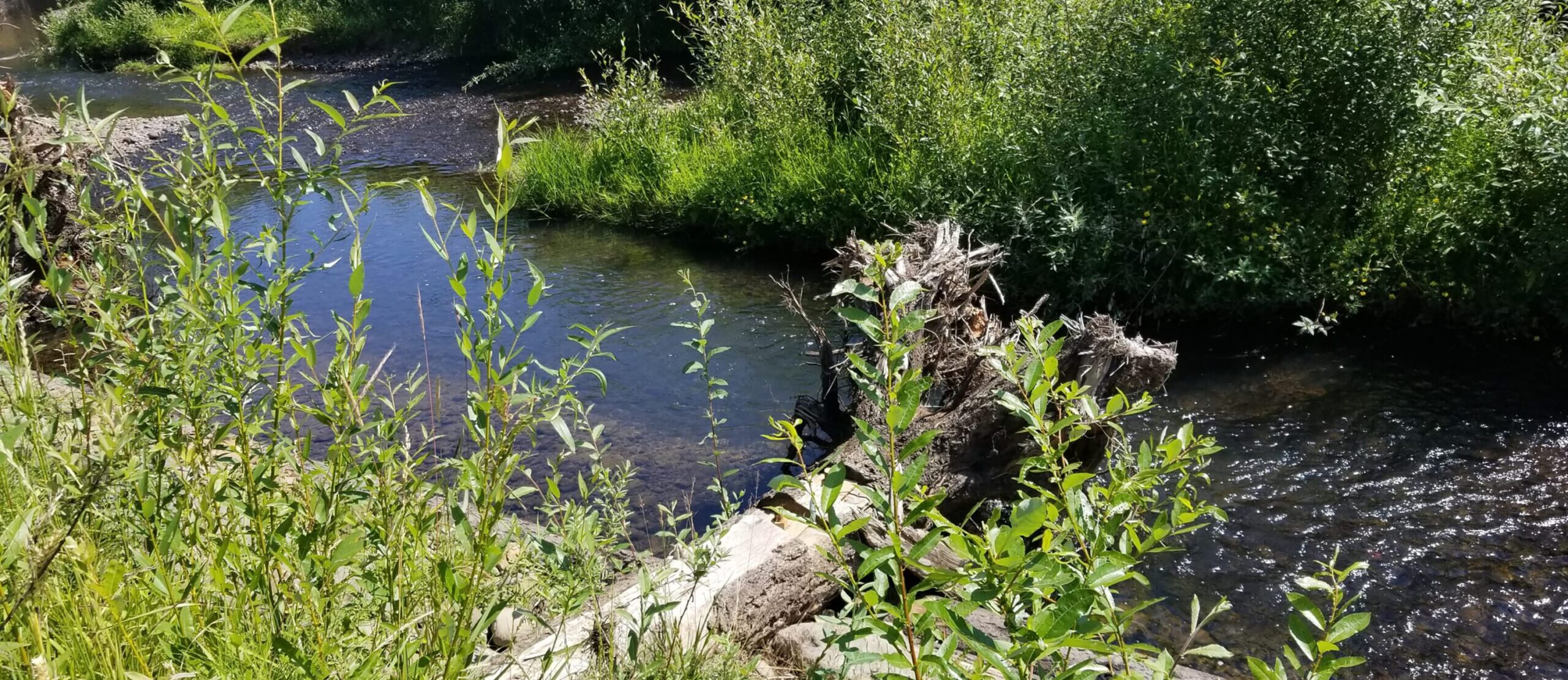Stream bank erosion is a natural process and, in an undisturbed stream, it usually happens slowly over time. However, once a stream is disturbed and plants along stream banks are removed, this process speeds up at alarming rates.
Active stream bank erosion can lead to property loss, poor water quality, and loss of healthy conditions for fish. We have all seen erosion caused property loss with large chunks of bank slumping and toppling into the stream following each large rain storm.
How do I fix it?
One way to help repair these serious erosion problems is to plant trees, shrubs, and grasses in the area along the stream known as a riparian area. Healthy plants covering the stream banks and the area next to the stream will serve to protect water quality, provides habitat for fish and wildlife, and stabilizes stream banks.
Now is the time to start planning your stream bank repair project. When deciding what plants to use, it is a good idea to think about using native plants. Native plants are adapted to our local soils and moisture conditions, and provide food and habitat for our native wildlife. Some of the best shrubs for the riparian area are native willows like Pacific and Scouler’s willow or Red Osier Dogwood, which can be recognized by its bright red stems and small white flowers. Native trees to consider are Oregon Ash and Red Alder. Willows and dogwood form dense hedges with fibrous roots, which can greatly reduce water speed, in turn slowing down erosion. Oregon Ash also has a very strong root system that is excellent at holding soil in place.
The best time to plant trees and shrubs are when they are not actively growing, typically between November and March. If you live in an area with beaver, mice, or other wildlife, it may be necessary to protect your plantings with tree protection tubes. Keeping the ground around each planting free from competing grass and other plants will also help reduce wildlife damage.
While adding native plants typically reduces stream bank erosion, in more extreme erosion cases, such as when banks are steep, planting trees and shrubs may not be enough to stabilize the stream bank. When this occurs, other techniques may be necessary to control the erosion.
Where will I find help?
Your local conservation district can provide on-site technical advice to assist you with protecting and restoring your riparian area. For more information on stream bank restoration in Clackamas County, contact Clackamas SWCD Riparian Specialist, Jenne Reische, at 503-210-6011.
Mark the calendar!
Don’t miss out on this very special event hosted by the Clackamas County Soil and Water Conservation District.
Stream Bank Erosion – a landowner workshop
September 20, 2014
8:00 a.m. to 11:30 a.m.
End of the Oregon Trail Museum
1726 Washington St. Oregon City OR 97045
Seating is limited, RSVP by calling Cathy at 503-210-6000 or e-mail Cathy


